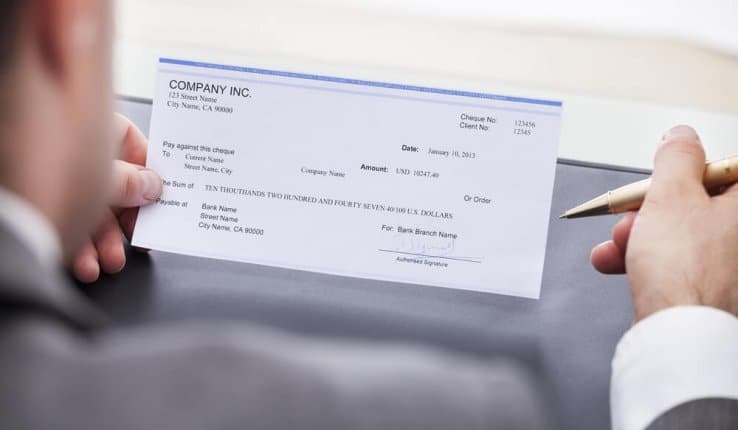If you’ve filed a vehicle insurance claim, you’ve most likely gotten a claim settlement check to help you return to your feet economically when something unexpected occurs. However, getting paid isn’t always as straightforward as bringing a check to the bank. A vehicle insurance claim check may get written in a variety of ways. Understanding how to manage each case will help you get back on your feet faster following a claim. Thus, we have made this post to teach you how to cash insurance check with lienholder.
What is the Procedure for Processing an Auto Insurance Payout?

Insurance claim check cashing may be a gray area, particularly when there aren’t always clear instructions on utilizing the check. While a claim check may get handled in various ways, it usually gets made out to the people in charge of seeing the fixes through.
You, the repair business, your lienholder, or a group of people might be involved. This is dependent on your circumstances and your vehicle insurance provider. Speaking with your insurance adjuster or claims representative if you have questions regarding, your claim check and how to manage it is an excellent first step.
How to Cash Insurance Check with Lienholder

You may not be able to obtain monies from a car insurance claim check made out to you and your vehicle loan provider on your own. The check will almost certainly need to be approved by you and your lender. This is valid since it contains both of your names.
The check may be cashed and used to settle off your auto loan after it has been forwarded to your lender and received the necessary signatures.
What if the check was for a repair instead of debt repayment? This is when things might start to take a long time. You’ll need to get the lienholder (or, if it’s a lease, the leaseholder) to sign the check. If handled by mail, this could take weeks. The phases in the procedure are usually as follows:
- Send the check to the lienholder.
- Repair the car if necessary.
- When the repairs finish, take your car to a dealership, have a representative check, and sign off on the work.
- Send the dealer’s statement, the repair bill, and photographs to the lienholder.
- Please wait for the lienholder to evaluate your files, sign the check, and return it to you by mail.
- When you get the check, cash it and pay the repair business.
How to Cash Insurance Check with Lienholder: Other Occurrences

Other than cashing an insurance check with the lienholder, there are times when you’ll need to pay a check. They are as follows:
The check is made payable to two individuals.
If your insurance carrier paid your automobile insurance claim, you might get a check made out to you and the authorized body shop. Auto insurance often offers two-party checks to decrease the possibility of the cash getting used for anything other than the planned repair.
The check isn’t always written to you and the mechanic, though. In other cases, such as a complete loss, the check will get made out to both you and the lienholder, who is your lender. And you’ll be expected to use the money to pay off your car loan.
In any scenario, you can figure out what to do with a two-party check by looking at the names to see whether they include the words “and” or “or.” You should be able to cash the check on your own if “or” is present. If the names get combined with a “and,” you must sign the check to the listed body shop. You must also finish the repairs there.
The check is for a claim from a third party.
When the claim check comes from the insurance company of another liable party, you usually have the most excellent options. If you were in a not-at-fault collision and the other driver’s insurance sent a check for the damages, you may be free to determine how to spend the money.
Before obtaining cash from a vehicle insurance company, you will almost certainly need to submit an estimate for the losses. This is true. Therefore you’ll probably want to use those dollars to fix your car.
Keep in mind that if you have a loan or are leasing the car, your lienholder may have restrictions on how the check may be used and may want confirmation that the damage got fixed.
Furthermore, if your vehicle was totaled and you received a check for the loss, you will be responsible for paying the lender the money they owe to close out the loan.
The claim payment is more than the cost of the repairs.
Your claim check may be more than the entire cost of repairs for your car in certain situations. How the surplus monies are handled is determined by how the check gets written.
Your insurance provider may need evidence of repair in some instances. The check may get made to you and the certified car body repair company up to the authorized amount.
In most cases, the repair shop gets anticipated to finish the work according to the estimate provided. If there is money left over, the difference is typically minor.
In most circumstances, you may be eligible to retain the difference if you choose an independent repair business and the entire cost of your repairs is less than the claim checks made payable to you.
Because you can’t claim the same damage twice, it’s essential to ensure all required repairs are complete. If there is a significant gap between the claim check and the repair cost, double-check that your car has thoroughly got repaired according to your insurer’s claim agreement.
Frequently Asked Questions
Can I cash the insurance check with the lienholder?
Yes. At this point, the above tips on how to cash insurance checks with lienholders will aid you immensely.
Is it possible to spend less on a vehicle repair than the insurance company reimbursed me?
An independent shop may be able to fix your car for cheaper than an insurer-preferred shop. It’s improbable that you’ll spend less than the insurance company for your automobile repairs.
This is true because, before getting cash, you must present an estimate to your vehicle insurance. This is true regardless of whatever repair business you choose.
You won’t need the repair shop to co-sign to cash the check and pay for the fixes if it’s written only to you. However, if you do not get your car fixed the first time correctly, you will not file a claim for the same damages.
What is the difference between a two-party and a one-party insurance check?
The payees of a two-party claim check are two different persons or organizations. Insurance firms often make checks to two parties to guarantee that the money gets utilized for its intended purpose. A claim check will undoubtedly include the policy owner among the participants. A lienholder, a leasing firm, or a body shop might be the second party.
What should I do if I don’t want to deal with a lienholder over an insurance check?
If you have a loan on your car, your claim check may be split between you and your lienholder, mainly if it gets ruled that your vehicle was a complete loss. You do not own your car when you have an auto loan; you and your bank jointly own it.
This implies it’s doubtful you’ll be able to persuade your insurance company to produce a claim check payable entirely to you. Paying off your car and removing the lienholder from your policy is the best approach to guarantee that a claim check is not made out to both you and the lienholder.
Must I pay for car repairs with a claim check?
It is debatable. If you have a lease on your car, your check will most likely get made out to both of you. The lienholder or body shop. You’ll very certainly need the second party on the check to sign off on it before you can cash it. It means you’ll have to utilize it for repairs.
If the check is made out entirely to you and the damage is just cosmetic — say, hail dings — you may be entitled to retain the money without repairing the car. Remember that you will not be able to get compensation for the losses from your insurance company in the future.
What are the most significant distinctions between state laws?
Every state has its insurance laws, which govern how claims get handled. Some jurisdictions, including Massachusetts, allow for immediate claim payments in a check sent to the insured.
This money may then get used to paying for repairs at their preferred auto body shop. Otherwise, insurers often use two-party checks written out to both the insured and the repair company to minimize claim check cashing fraud.
This ensures that the monies get utilized to pay for the damages claimed. Check your state’s insurance rules or chat with an agent to learn how to claim payouts get handled in your state.
Conclusion
In conclusion, insurance comes with numerous merits. And if you desire more assistance on how to cash insurance checks with lienholders, the above tips will aid you immensely.




